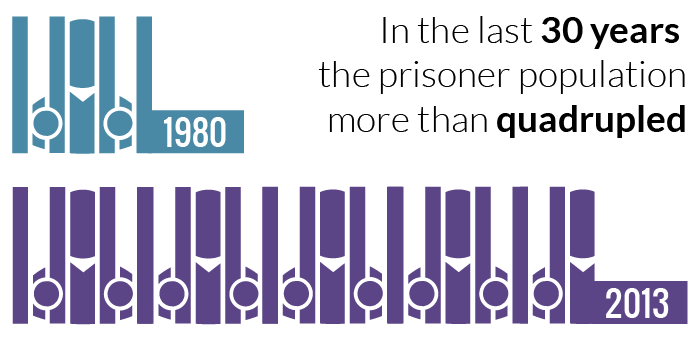Political Candidates Embracing Rehabilitation Strategy
Whether you’re following the Democrats or the Republicans, there’s no denying that politicians speak differently about substance abuse and addiction than they did in decades past. This is especially true in the Republican Party, where former presidents Ronald Reagan and Richard Nixon started, continued and escalated the war on drugs during the 1970s and 1980s.
An increasing number of politicians are promoting rehabilitation over incarceration.
Former Republican presidential candidates Carly Fiorina, Jeb Bush, and Chris Christie have all gone into great detail about personal experiences of friends or family members struggling with addiction. Many other politicians have seen the destruction caused by addiction in their home states and have begun rethinking their prevention strategies. [1]
From Donald Trump to Hillary Clinton, Bernie Sanders and Marco Rubio, the political discussions about drug addiction in America have increased significantly during this 2016 presidential campaign race. Be it because of record overdose numbers around the nation, [2] more and more individuals falling prey to addiction or advancement of science, it appears that an increasing number of politicians are promoting rehabilitation over incarceration.
Politicians Looking At Addiction as a Disease, Not a Moral Failing
Virtually every presidential candidate on the campaign trail has given their vehement support for treatment over incarceration for substance abuse and addiction. [3] This philosophy is a far cry from what political leaders of the past (who typically tried to win elections by being tough on crime and drugs) subscribed to.
Instead of criminalizing addiction, it appears that the newest generation of presidential hopefuls are recognizing it for what it is: a deadly disease.
Quotes from Past Politicians about Drugs:
- President Ronald Reagan – Aug. 4, 1986 – “We will refuse to let drug users blame their behavior on others.” [4]
- President Bill Clinton – Oct. 11, 1992 – “I am adamantly opposed to legalizing drugs. [My brother] is alive today because of the criminal justice system. What should we do? First, we ought to prevent more of this on the street. We need 100,000 more police on the street. I have a plan for that. Secondly, we ought to have treatment on demand. [5]
- President George H.W. Bush – Sept. 5, 1989 – “We need more prisons, more jails, more courts, more prosecutors.” [6]
- President Richard Nixon – Jan. 15, 1992 – “We will not gain the upper hand in the war against drugs until we shift the focus of our efforts from a supply-side battle in distant corners of the world to a demand-side battle at home. Victory will only come if we reduce the demand for drugs through stronger legal sanctions, education, treatment, and a radical change in community values.” [7]
Quotes from Current Politicians about Drugs:
- Donald J. Trump – Jan. 25, 2016 “We are gonna try and help the young people, and the old people, and the middle age people, and everybody that got addicted. What’s much easier, is if we can just stop it with where they don’t start. And we can talk to people and talk to the kids and say ‘don’t do it.” [8]
- Senator Bernie Sanders – Sept. 5, 2015 – “Nonviolent drug offenders should not be incarcerated. Instead, they should be allowed to access affordable treatment to address their drug dependencies.” [9]
- Secretary Hillary Clinton – Oct. 13, 2015 – “I agree completely with the idea that we have got to stop imprisoning people who use marijuana. Therefore, we need more states, cities, and the federal government to begin to address this so that we don’t have this terrible result of a huge population in our prisons for nonviolent, low-level offenses that are primarily due to marijuana.” [10]
- Senator Ted Cruz – April 28, 2015 – “As of February 2015, nearly half–49%–of [federal prison] inmates were sentenced for drug crimes. This has contributed to overcrowding. Federal prisons now house 39 percent more inmates than their capacity. It is far from clear whether this dramatic increase in incarceration for drug crimes has had enough of an effect on property and violent crime rates to justify the human toll of more incarceration.” [11]
The Journey from Incarceration to Rehabilitation
For as long as humans have been abusing drugs and alcohol (which is basically since the beginning of time), addiction has often been criminalized and shown to be a sign of moral weakness. For thousands of years, addicts were thrown in jails and asylums or left to rot away in their own substance abuse.
Individuals dealing with addiction were thrown in jails and asylums or left to rot away in their own substance abuse.
It wasn’t until the mid-late 19th century when the first medical professionals began looking at alcoholism and addiction as a disease. This philosophy slowly gained momentum throughout the early part of the 20th century, leading to the formation of Alcoholics Anonymous in 1935 and the Minnesota Model of treatment in 1951. [12]
From there, public awareness initiatives combined with research and the formation of several addict advocacy groups to continue the move from the criminalization of addiction to treatment. In 1978, when First Lady Betty Ford addressed the country about her addiction to alcohol and prescription drugs, it put a recognizable face on a long-standing societal problem.
The War on Drugs
For as much progress that had been made in the addiction and rehabilitation industries in the decades prior, the escalation of the war on drugs during the 1980s halted much of this momentum. Nancy Reagan’s famous “Just Say No” anti-drug campaign was part of a federal movement to reduce support for addiction treatment programs and increase the criminalization of drug use. It was during this period that U.S. incarceration rates skyrocketed to the point where the nation now houses more inmates than any other country on Earth. [13]
However, this spike in prisoners during the ’80s and early ’90s led to overcrowding of prisons and increased demand for drug courts and other incarceration alternatives. In 1991, the American Medical Association (AMA) officially classified alcoholism as a treatable disease. [14]

As can be seen by the changing tone of the current presidential candidates and in proposed and passed legislation from the Obama Administration, the philosophies surrounding alcoholism and drug addiction have shifted in the favor of treatment and rehabilitation.
Addiction Treatment Works
As incarceration rates spiked through the ’80s and ’90s, drug abuse and addiction also increased, suggesting that incarceration does not work. Simply throwing a person in jail will not cure him or her of addiction. Comprehensive treatment that accounts for all of the damage caused by substance abuse is the best way to help a person defeat addiction.
At Seaside Palm Beach, we’ve helped hundreds of alcoholics and drug addicts reclaim control over their lives and become productive members of their families and society. If you or someone you love is struggling with addiction, we invite you to contact one of our addiction care representatives to learn how we can help.



